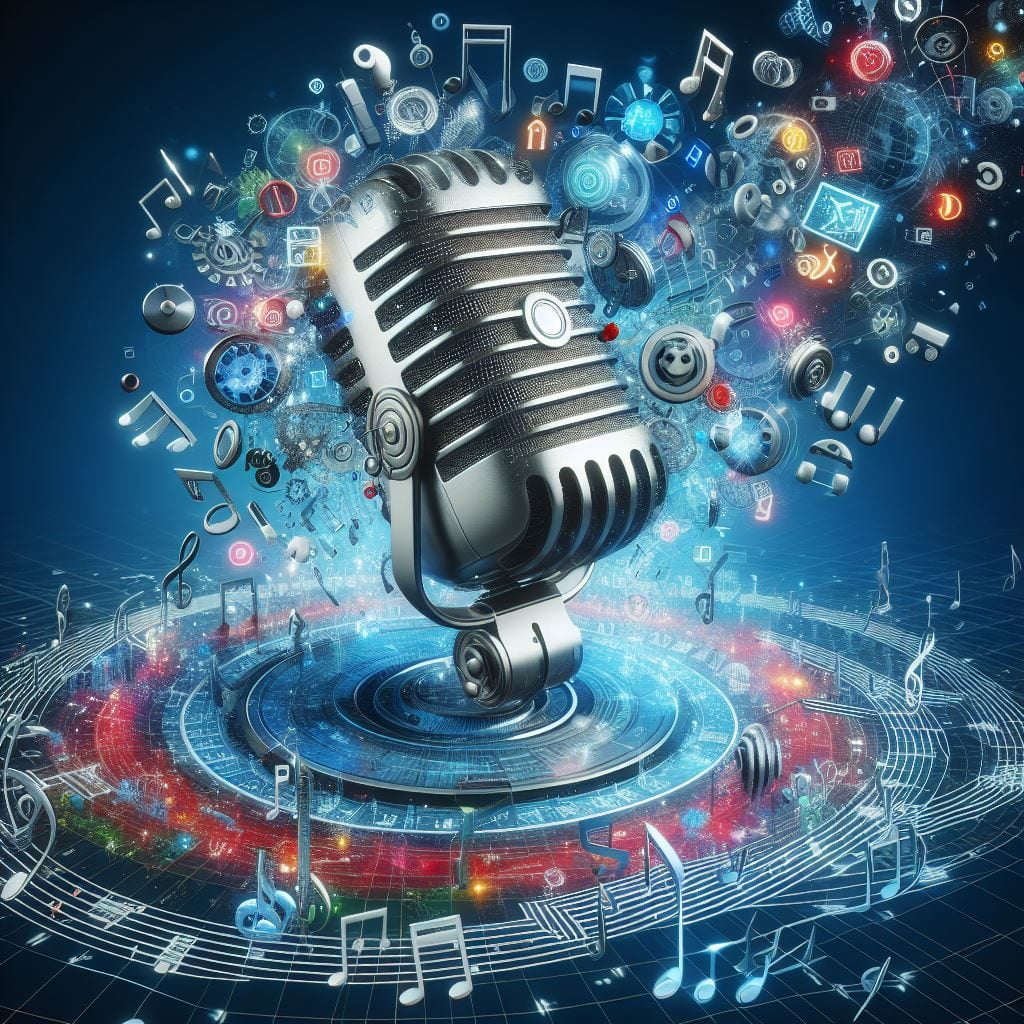The Voice to Text Generator, a tool that has revolutionized the way we convert spoken language into written text. In this comprehensive guide, we will delve deep into the world of Voice to Text Generators, exploring their functionality, applications, benefits, and the various options available in the market. Join us on this journey as we unlock the full potential of this remarkable technology.
Works only on Google Chrome Browser
Voice to Text Generator
Processing audio...

Table of Contents
What is a Voice to Text Generator?
Definition and Basics
A Voice to Text Generator, also known as a Speech Recognition System, is a software or hardware tool that converts spoken language into written text. It achieves this by analyzing audio input and transcribing it into a readable format. The technology behind Voice to Text Generators is a combination of advanced algorithms, machine learning models, and natural language processing (NLP) techniques.
Speech Recognition Technology
Speech recognition technology has come a long way, thanks to advancements in machine learning and neural networks. Deep learning models, such as recurrent neural networks (RNNs) and convolutional neural networks (CNNs), have significantly improved the accuracy of speech recognition systems.
Natural Language Processing (NLP)
NLP plays a vital role in understanding the context and semantics of spoken language. Sentiment analysis, named entity recognition, and language modeling are NLP techniques that enhance the capabilities of Voice to Text Generators.
Machine Learning Algorithms
Machine learning algorithms, including Hidden Markov Models (HMMs) and deep learning models like Long Short-Term Memory (LSTM) networks, enable Voice to Text Generators to adapt and improve their accuracy over time. These algorithms analyze vast datasets to refine their recognition capabilities.
How Does it Work?
Voice to Text Generators operate in several steps:
Audio Input: The system captures audio input through a microphone or other audio recording devices.
Signal Processing: The raw audio data undergoes signal processing to filter out noise and enhance the clarity of the speech.
Feature Extraction: The system extracts relevant features from the audio, such as phonemes and prosody, to understand the speech patterns.
Acoustic Modeling: It uses acoustic models to match the extracted features with known speech patterns and phonemes.
Language Modeling: Language models predict the most likely words and phrases based on the acoustic input and context.
Decoding: The system decodes the speech and generates text output.
Post-Processing: Post-processing techniques further refine the text, improving accuracy and readability.
Applications of Voice to Text Generators
Voice to Text Generators have become an integral part of our daily lives. They are commonly used for:
Text Messaging: Quick and convenient typing of messages.
Voice Assistants: Interacting with virtual assistants like Siri and Alexa.
Note-Taking: Creating notes and reminders.
In Professional Settings
In professional settings, Voice to Text Generators offer a wide range of applications:
Transcription Services: Converting recorded interviews and meetings into text.
Content Creation: Writing articles, blogs, and reports using spoken content.
Accessibility: Enabling individuals with disabilities to communicate and access information.
Accessibility Benefits
Voice to Text Generators play a crucial role in enhancing accessibility for individuals with disabilities, such as those with mobility impairments or visual impairments. They enable these individuals to interact with computers, smartphones, and other devices more effectively.
Advantages of Using Voice to Text Generators
Improved Productivity
Voice to Text Generators significantly boost productivity by:
Speed: Allowing users to input text faster than traditional typing.
Hands-Free Operation: Enabling multitasking while dictating text.
Reducing Errors: Minimizing typing errors and improving accuracy.
Enhanced Accessibility
Voice to Text Generators break down barriers for individuals with disabilities, making it easier for them to communicate and access information independently.
Multilingual Support
Many Voice to Text Generators support multiple languages, facilitating communication and content creation in a globalized world.
Accuracy and Efficiency
Advanced machine learning algorithms continually improve the accuracy and efficiency of Voice to Text Generators, making them more reliable and user-friendly.
Popular Voice to Text Generator Tools
Google Speech-to-Text
Google Speech-to-Text is a cloud-based service that offers high-quality speech recognition. It is widely used for various applications, including transcription services, voice commands, and voice search.
Dragon Naturally Speaking
Dragon NaturallySpeaking, developed by Nuance Communications, is a renowned speech recognition software with robust features and excellent accuracy. It is often used in professional settings for transcription and document creation.
IBM Watson Speech to Text
IBM Watson Speech to Text leverages AI and machine learning to provide accurate and customizable speech recognition solutions. It is a powerful tool for businesses and developers seeking to integrate voice-to-text capabilities into their applications.
Voice to Text Generators: The Future Outlook
Emerging Technologies
The future of Voice to Text Generators holds exciting possibilities, with emerging technologies like automatic language identification and emotion recognition poised to enhance their capabilities.
Potential Innovations
Voice to Text Generators may see innovations in real-time translation, enabling seamless multilingual communication, and improved accuracy with regional accents and dialects.
Integration with Other Systems
As Voice to Text Generators become more sophisticated, they are likely to integrate seamlessly with other systems, such as virtual reality environments and augmented reality devices.
Applications of Voice to Text Generators:
VTT generators are finding applications in various areas, including:
Professional settings: Dictating reports, emails, presentations, and other documents.
Education: Transcribing lectures, interviews, and meetings for easier review and study.
Media and journalism: Transcribing interviews, podcasts, and other audio content for articles and documentaries.
Content creation: Creating blog posts, articles, and social media content through dictation.
Accessibility: Providing an alternative input method for individuals with disabilities.
Considerations When Choosing a Voice to Text Generator:
Accuracy: Ensure the VTT generator offers high accuracy for your specific needs. Consider factors such as language support, accent recognition, and technical jargon handling.
Features: Different VTT generators offer various features, such as speaker diarization, noise cancellation, and real-time transcription. Choose a software that caters to your specific requirements.
Cost: VTT generators come with varying price points, ranging from free online tools to professional software with advanced features. Consider your budget and needs to find the most suitable option.
User Interface: Opt for a VTT generator with a user-friendly interface that is intuitive and easy to navigate.
Case Studies:
A journalist uses a VTT generator to transcribe interviews and recordings, saving time and ensuring accurate quotes.
A student with a learning disability utilizes VTT software to take notes in class, improving their comprehension and academic performance.
A creative writer dictates stories and ideas into a VTT app, capturing their thoughts effortlessly and boosting their productivity.
A professional with carpal tunnel syndrome uses VTT technology to create presentations and reports, reducing strain on their wrists.
Top 5 Voice to Text Solutions
There is an abundance of voice typing software available today at varying levels of sophistication and accuracy. These top tools represent leading options for personal and business use:
1. Otter.ai
Otter.ai is an innovative voice to text application featuring advanced AI and easy collaboration tools. It excels at accurate voice transcription, speaker identification, and offers 600 free minutes per month.
2. Google Docs Voice Typing
Google Docs includes a robust integrated voice typing feature. It’s simple to use Google’s speech recognition directly within Google’s online document apps.
3. Microsoft Dictate
MS Dictate can act as an efficient dictation tool across Microsoft apps like Word, Outlook, etc. It also supports advanced punctuation and commands.
4. Dragon Naturally Speaking
This software has exceptionally accurate speech interpretation algorithms and deep customization abilities for individual users.
5. Amazon Transcribe
Amazon Transcribe offers easy-to-use automatic speech recognition across audio/video files and streaming sources. Integrates well with other AWS services.
Comparing voice to text software will determine which excel at certain environments, integrations, pricing, cloud/local hosting, and use case scenarios relevant to individual needs.
Key Benefits of Using Voice Typing Software
Why exactly should someone consider employing voice recognition over typing manually? Modern voice to text generators deliver outstanding advantages:
– Saves significant time – Speak 3x faster than typing typically
Enables hands-free work- Useful for multitasking or situations where keyboards impractical
Boosts productivity – Quickly churn out documents, emails, notes when traveling
Reduces stress injuries – Alternate input modality compared to excessive typing
Assists disabilities – Help those unable to physically use keyboards effectively
Between the accuracy improvements and advanced features of today’s tools, they can hugely impact workflows for a wide range of professionals, businesses, and personal applications.
Effective Techniques for Leveraging Speech to Text
Simply enabling voice typing isn’t enough to reap the maximum productivity rewards. Here are best practices to incorporate when using voice recognition:
Train accuracy with speech samples
Use clear pronunciation and regular pacing
Have tool learn vocabulary you commonly use
Leverage keyboard shortcuts to navigate documents
Use advanced formatting commands for efficiency
Employ built-in or custom templates
Utilize collaborative features if available
Check for and correct transcription mistakes before sending or publishing documents
With some practice, these habits will help anyone become adept at leveraging voice to text for faster document creation.
Modern voice to text generators utilize sophisticated AI to convert speech with best-in-class speed, ease and accuracy. Top solutions like Otter.ai, Google Docs voice typing, Microsoft Dictate, Dragon, and Amazon Transcribe present versatile options for individuals and organizations.
By following effective voice typing techniques, these tools can massively boost productivity across many common tasks and workflows. With continual innovation in natural language processing, speech recognition software provides an indispensable asset for anyone who regularly works with digital text.
Discover more from TechResider Submit AI Tool
Subscribe to get the latest posts sent to your email.

